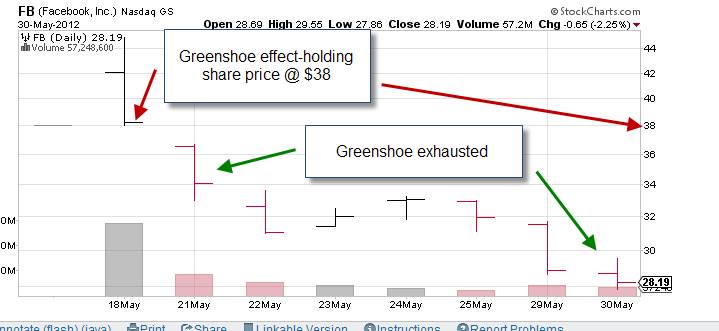Forex Trading
Capital economics Wikipedia
Content

We provide our insights across a range of channels that allow all roles involved in investment decisions to get timely, relevant information in a format that suits them. Our methodology is built upon six core principles, which are embedded in every piece of analysis we produce and every interaction we have with our clients. Capital Economics is a world-leading provider of independent economic insight.
- Economists watch several metrics of capital including personal income and personal consumption from the Commerce Department’s Personal Income and Outlays reports.
- On a global scale, capital is all of the money that is currently in circulation, being exchanged for day-to-day necessities or longer-term wants.
- Investment in human capital benefits individual workers as well as the economy in which they participate, creating greater earning potential and an increased ability to build wealth.
- Nic Barnhart of Pareto Labs defines capital as simply, “Money that is used to make more money.” This definition can apply to individuals in the greater economy and to companies.
- Economists Kevin M. Murphy and Finis Welch have shown that the premium on getting a college education in the 1980s was above 65 percent.
Financial capital is how companies invest in their businesses. They use capital to buy more equipment, buildings, or materials, which they then use to make goods or provide services. A business’s capital assets can include cash and investments, as well.
Barriers to the free movement of capital
Then, when the business is operational, the company needs working capital to purchase raw materials, pay bills to suppliers and build inventory. It is money for daily needs, namely the difference between current assets (cash and asset items converted into cash) and current liabilities (short-term debt and trade payables). The capital assets of an individual or a business may include real estate, cars, investments (long or short-term), and other valuable possessions. A business may also have capital assets including expensive machinery, inventory, warehouse space, office equipment, and patents held by the company.
Capital gains are exactly as they sound—your invested capital gains value after an investment. Capital losses occur when your capital loses value after an investment. Capital is absolutely essential to a company getting off the ground—it’s like the first fill on the gas tank that will hopefully come to run a business that is profitable in the long term. Capital can be infused into the business at any time, to refuel the tank if it gets low.
Once they have a track record, they can get bank loans and federal government assistance from the Small Business Administration. Money is cash that you spend and capital is cash (or other asset) that you put to work. The money in your wallet isn’t a form of capital unless you put it to work earning you more money. People in finance often describe capital as having “greater durability” than money because it can be continuously re-invested to earn more value. Therefore, capital plays a very important part in maintaining the defence of the country. Consequent to developments in technology and specialization in the production system, the role of capital has become even more significant and important.
Commission communication on the protection of investments
Thinking about higher education as an investment in human capital helps us understand why the fraction of high school graduates who go to college increases and decreases from time to time. When the benefits of a college degree fell in the 1970s, for example, the fraction of white high school graduates who started college fell—from 51 percent in 1970 to 46 percent in 1975. Many educators expected that enrollments would continue to decline in the 1980s, partly because the number of eighteen-year-olds was declining, but also because college tuition was rising rapidly. That percentage kept increasing to an all-time high of 67 percent in 1997 and then declined slightly to 64 percent in 2000.
A part of the capital is used for procuring raw materials for production purposes. Every concern must be regarding a sufficient supply of raw materials of good quality and in adequate quantity. Production can be increased to a large extent if workers work with adequate capital. This is so because it becomes ineffective without co-operation of labour.

The progress of many undeveloped and underdeveloped countries gets retarded, because of the paucity, of funds. Amongst all the factors of production, capital has the highest mobility. The land is immobile, labour has low mobility, whereas ‘capital’ has both ‘place mobility’ and ‘occupational mobility’. According to this, all those things, which satisfy human wants are capital goods. It means that both, consumer goods as well as producer goods should be included in ‘capital’, as both satisfy human wants in one way or the other.
Financial Capital vs. Capital in Economics
Here, we are talking about an increase in output due to increased quantity (number of machines). Thus, the stock of capital must be sufficient to meet the requirements of its ordinance factories, military and naval bases. It is impossible to maintain well-equipped defence forces without sufficient stock of capital. The strength of a nation is actually found to be directly correlated with stock of capital.

Physical capital contributes directly to producing goods and services such as machinery, equipment, and logistics vehicles. Meanwhile, companies need financial capital to buy these items. For instance, when you start a new business, you need a start-up capital to purchase essential capital goods or rent a production site. It can come from your own money, from family or relatives, or from external loans.
Sunk capital is that category of capital, which can be used to produce only one type of commodity or service. For example, an ice factory and an oil mill, uses capital only to produce ice and oil respectively and no other commodity. meaning of capital in economics Those hidden qualities in a person which earn him an income and cannot be transferred from one person to another is called personal capital, for e.g., a singer’s melodious voice, teaching skills of teacher, etc.
These are all forms of capital in the sense that they are assets that yield income and other useful outputs over long periods of time. Investment in human capital benefits individual workers as well as the economy in which they participate, creating greater earning potential and an increased ability to build wealth. Now, we discuss physical capital as mentioned by economists. In the financial statements, you might find it as a property, plant, and equipment (PP&E) account.
Capital in economics
Typically, business capital and financial capital are judged from the perspective of a company’s capital structure. In the U.S., banks are required to hold a minimum amount of capital as a risk mitigation requirement (sometimes called economic capital) as directed by the central banks and banking regulations. Capital assets can be found on either the current or long-term portion of the balance sheet. These assets may include cash, cash equivalents, and marketable securities as well as manufacturing equipment, production facilities, and storage facilities.
Our forecasts are built upon the years of market knowledge and experience of our economist team. We work together to help enable our clients to understand the global trends that will influence their success in the immediate term, in the next 2-3 years and beyond. We have a proven track record of accurate forecasts in key markets and regions, built upon the collective market experience of our economist team. We can confidently make non-consensus calls when necessary thanks to our rigorous analysis and independence. We know that every second counts when our clients need to make key investment decisions.
Like individuals, businesses must have an active credit history to obtain debt capital. The interest rates vary depending on the type of capital obtained and the borrower’s credit history. Some of the key metrics for analyzing business capital are weighted average cost of capital, debt to equity, debt to capital, and return on equity. Capital is used by companies to pay for the ongoing production of goods and services to create profit.
Article 63of the treaty on the functioning of the EU prohibits all restrictions on capital movements and payments not only within the EU, but also between EU countries and countries outside the EU. The purpose of free movement of capital is to enable an efficient cross-border deployment of physical and financial capital for investment and financing purposes. No discussion of human capital can omit the influence of families on the knowledge, skills, health, values, and habits of their children. Parents affect educational attainment, marital stability, propensities to smoke and to get to work on time, and many other dimensions of their children’s lives. This is not surprising to a “human capitalist.” Such forecasts ignored the changing incentives—on the cost side and on the benefit side—to enroll in college. Because these are intangible assets that cannot be separated from individual workers, quantifying them can be difficult.
In general, capital can be a measurement of wealth and also a resource that provides for increasing wealth through direct investment or capital project investments. Individuals hold capital and capital assets as part of their net worth. Companies have capital structures that include debt capital, equity capital, and working capital for daily expenditures. Of course, formal education is not the only way to invest in human capital. Workers also learn and are trained outside schools, especially on the job. Even college graduates are not fully prepared for the labor market when they leave school and must be fitted into their jobs through formal and informal training programs.
Positive working capital means the value of a company’s current assets is more than its current liabilities Negative working capital, on the other hand, means that current liabilities outweigh current assets. For the company, this could lead to financial issues with creditors, growth, or production. Nic Barnhart of Pareto Labs defines capital as simply, “Money that is used to make more money.” This definition can apply to individuals in the greater economy and to companies. In the world of business, the term capital means anything a business owns that contributes to building wealth. Can the money spent increase the company’s production capacity or not? You should compare capital expenditures with the depreciation of fixed assets.
Capital plays a very important role in increasing productivity. For example- a worker working on a handloom can produce only a few meters of cloth. A worker working on a power loom can produce many times more cloth.
Capital movements
Some can be tangible, such as factories or machinery, while others can be intangible, such as patents or technological innovations. Capital is an important factor in the production process and it plays a key role in the functioning of the economy. It has a few key characteristics that distinguish it from other similar concepts such as being man-made, highly mobile, passive, and depreciatory. How we choose to spend our resources has long-term economic implications. For example, financial capital invested in education furthers economic growth more than paying the local pro for a lesson on improving a golf swing.


